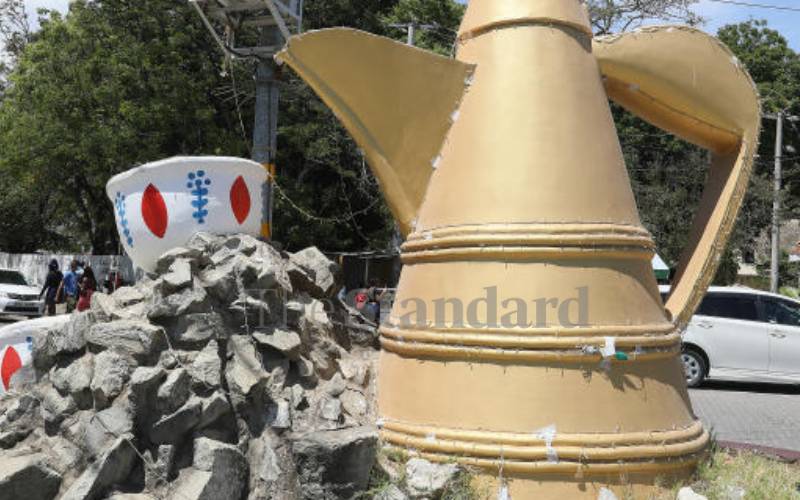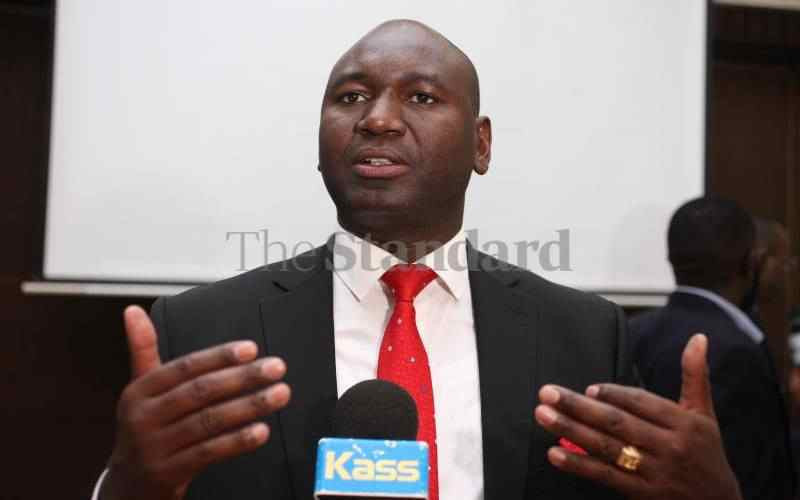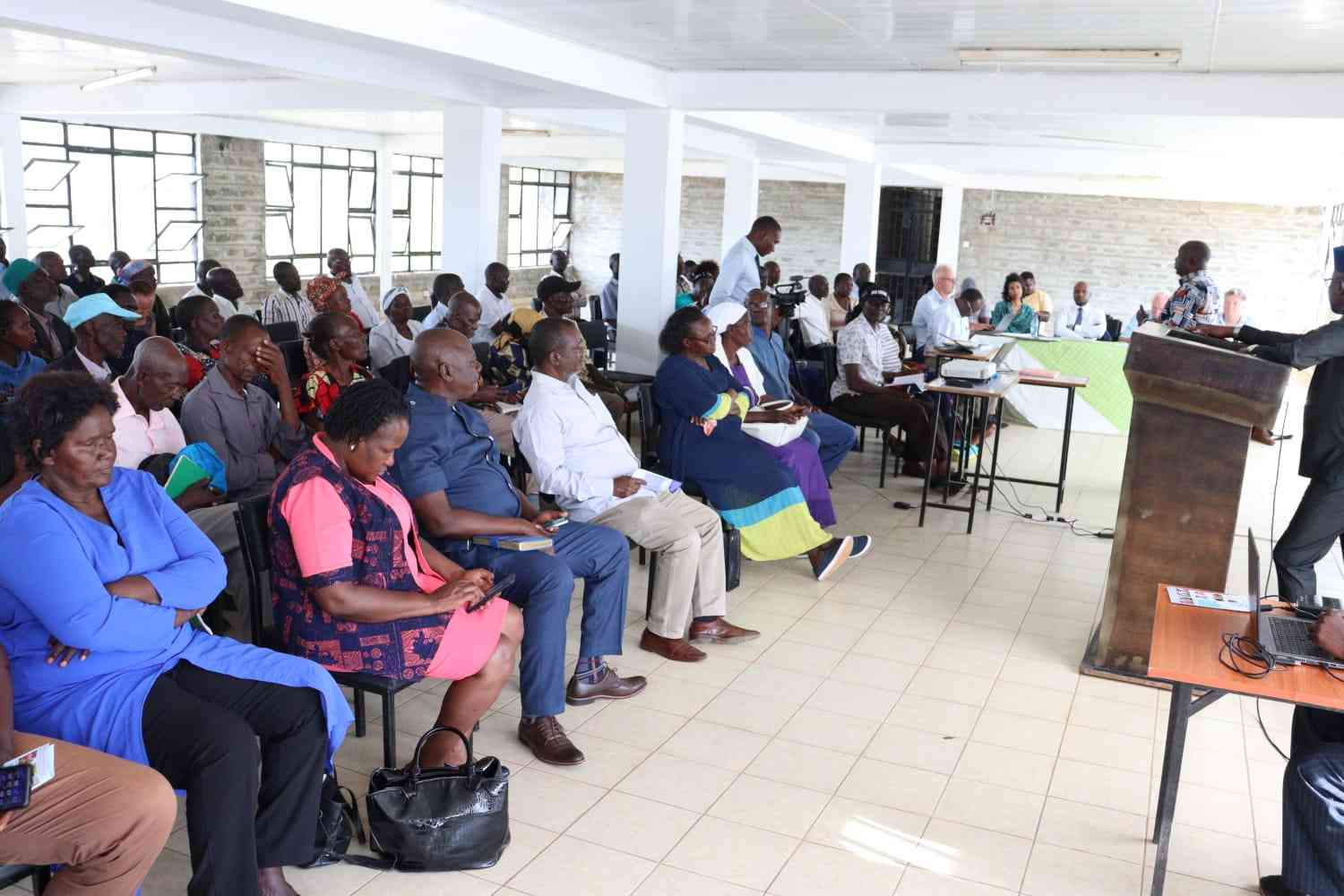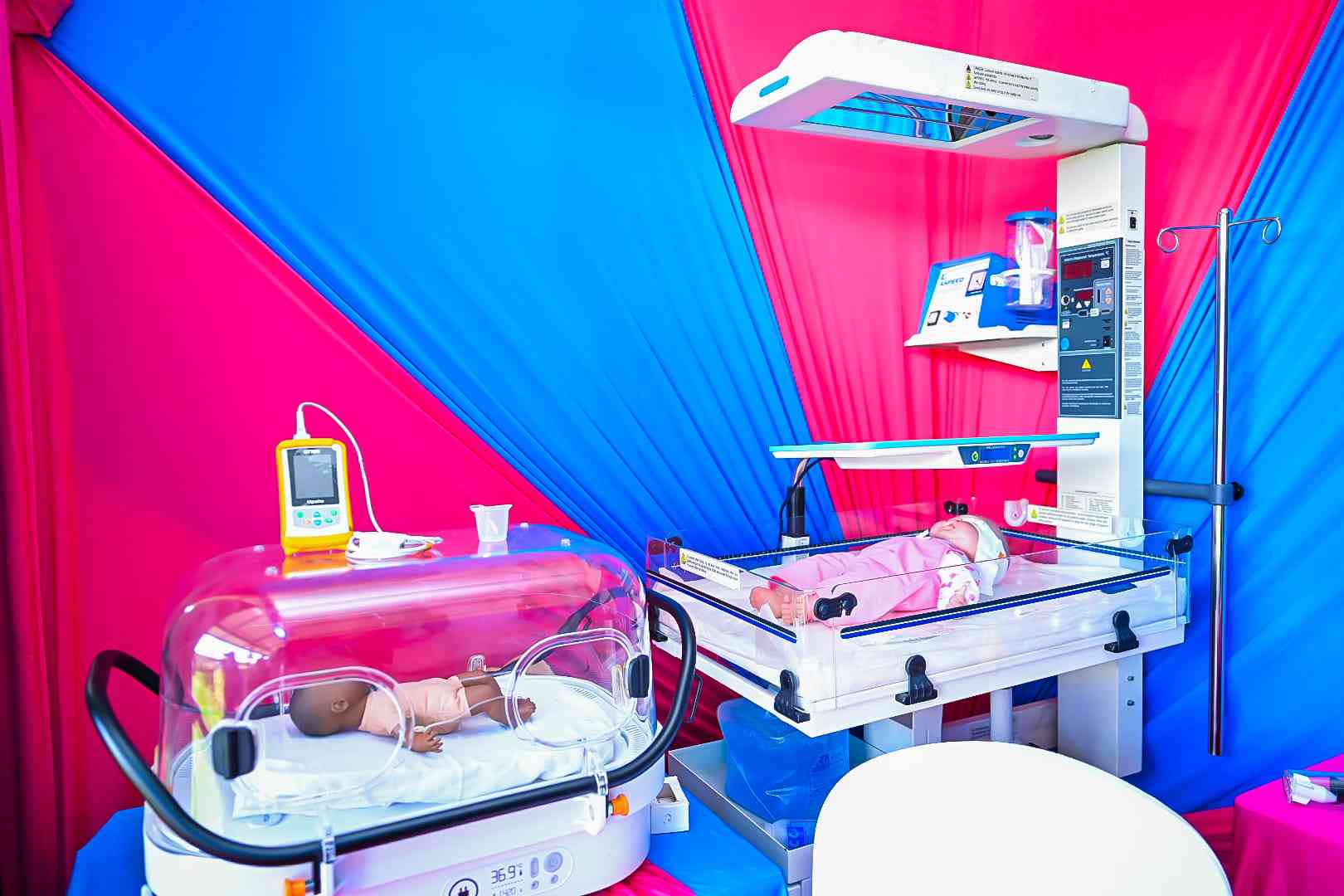
Coffee pot near Fort Jesus, Old Town, Mombasa. [Omondi Onyango, Standard]
The sun sets lazily, with its slanting rays hitting the narrow streets of Mombasa’s Old Town, which has started to witness a burst of activities.
Men have created temporary coffee joints along the streets. Some have closed some narrow alleys to set up the joints. They are all ready for one of the oldest businesses in the city.
Beside the sitting benches are boiling coffee pots on charcoal stoves and next to them are strikingly clean miniature ceramic cups and mini donuts, mitai, and fried dumplings, Kaimati, on makuti trays.
It is past 6.30pm and customers, mostly Swahili men, are flocking these joints for the kahawa chungu and Kahawa tamu, and a plate of kaimati or mitia.
In Mombasa, Malindi, Lamu, Kilifi and Kwale towns, it is common to find old Swahili men sitting at the barazas, sipping kahawa chungu and playing backgammon or bao games.
Locals say it is a tradition that dates back to 1331 when the first Arab traveller, Ibn Battutah, arrived at the shores of Mombasa.
A coffee pot (buli) and the three Arabia coffee cups outside a roundabout at Fort Jesus are a reminder of that history. The inscription on the pot indicates it was built by Burhan Ali Taher in 1988.
But the National Museum of Kenya officials say that next to the coffee pot is a remnant of the original trolley track laid there in 1890.
Mombasa lawyer Hamid Mohamood, a coffee lover, says the buli renders a metaphor of a shared cup of coffee and its significance in bringing the coastal people together.
“Having a cup of coffee together is a Swahili cultural tradition observed for centuries in Mombasa, Malindi and Lamu,” said Mohamood.
Mombasa main streets like Haile Selassie Avenue, Moi Avenue and Karisa Maitha road in Kisauni are dotted with street coffee joints locally called maskani.
The maskanis are a no go zone for women, except for those that supply kaimati and mitai.
Mohamood says when Arabs came to Mombasa aboard dhows many years ago, they brought the coffee drinking culture. Hussein Ahmed, who frequents a joint near Fort Jesus, said some traders introduced games like dumna, bao and cards at the maskanis.
“The reason why women are not encouraged to come near these joints is that men use this time to advise one another on marital issues,” said Ahmed.
He said all aspects of marital challenges were discussed openly at the coffee joint because “those who gather at one particular joint are mostly friends or even cousins.”
Mwinyi Mtende, a vendor at Old Town, says the drink boosts the libido. “Other customers drink up to six cups, saying it is an aphrodisiac. It has different effects on different customers,” he told The Standard.
In other areas, men take the black coffee while chewing khat.
Lawyer Mohamood said, in the Middle East, the coffee is served in the King’s palace and at the royal wedding as a sign of respect to the guests.
“In the Middle East, this type of coffee ends wars or conflicts. It is served with haluwa or dates, which helps balance off the taste,” he said.
He says the drink was served in Mosques during weddings and celebrations such as Idd. But the culture, Mohamood says, is facing threats.
A spot check by The Standard showed some pioneers in the business, like Said Ahmed, who used to prepare the drink at Mwembe Tayari in the 1990s, had closed shop.
Swaleh Hamisi, who took over the business from his father two years ago, says he will quit because it is no longer profitable. “I am planning to go to Saudi Arabia to look for a job. Most young people go to many modern coffee shops in the city,” said 27-year-old Swaleh.
He says Covid-19 affected the business, but is happy things are getting better. “I only make a profit of Sh200 a day, which is far below what my father used to get. Many politicians like ODM leader Raila Odinga and Mombasa Governor Hassan Joho used to take coffee here when my father operated the place. He made huge profits,” he adds.
Mohamood says those who invented the drink made profits and invested in most parts of the town.
“The elder Arabs who initiated the business many years ago died without anybody taking over. These pioneers were unique people. They invested in property in most parts of the town. These are the people who own several big buildings at Saragoyi, Majengo and other parts of the town,” he says.
 The Standard Group Plc is a multi-media organization with investments in media platforms spanning newspaper print
operations, television, radio broadcasting, digital and online services. The Standard Group is recognized as a
leading multi-media house in Kenya with a key influence in matters of national and international interest.
The Standard Group Plc is a multi-media organization with investments in media platforms spanning newspaper print
operations, television, radio broadcasting, digital and online services. The Standard Group is recognized as a
leading multi-media house in Kenya with a key influence in matters of national and international interest.











